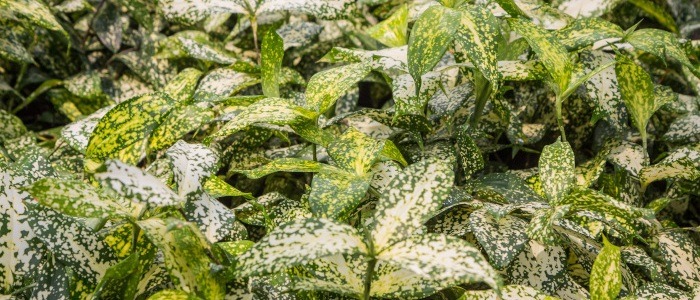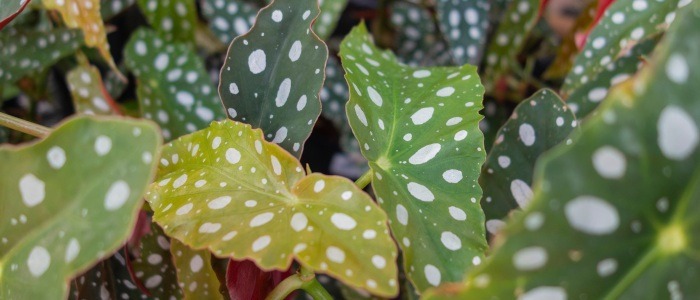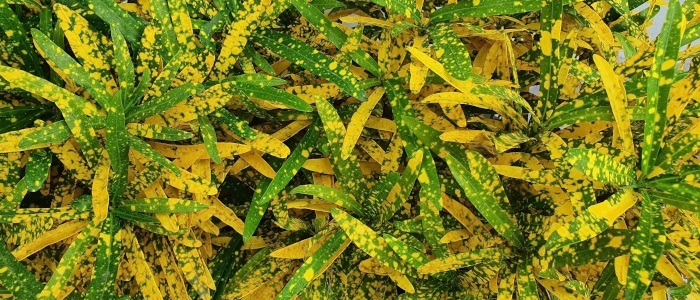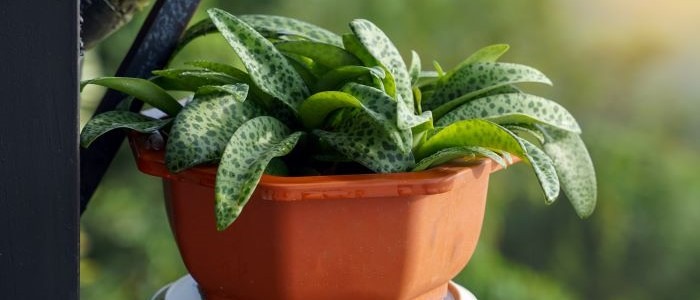Welcome to the wonderful world of the polka dot plant! If you are considering getting a low-maintenance houseplant that adds a splash of color to your space, the polka dot plant is a great choice. With its vibrant green leaves and playful pink spots, it’s sure to brighten up any room. But, like all plants, it requires proper care to thrive.
In this article, we’ll cover everything you need to know about caring for your polka dot plant, from watering and fertilizing to pruning and propagating. Let’s get started!

Polka Dot Plant Frequently Asked Questions
Are polka dot plants indoors or outdoors?
Polka dot plants can be grown both indoors and outdoors, depending on your preference and climate. They are a popular houseplant choice due to their colorful foliage and easy care requirements. When grown outdoors, they can add a pop of color to gardens, containers, and hanging baskets. However, it's important to note that they are sensitive to cold temperatures and should be brought indoors during the winter months in colder regions.
Can polka plants be propagated in water?
Yes, polka dot plants can be propagated in water. To do so, take a cutting from a healthy plant and remove the lower leaves. Place the cutting in a jar or vase filled with water and change the water every few days. Roots should begin to form within a few weeks, at which point the cutting can be planted in soil. Propagating in water can be a great way to create new plants and expand your collection.
How to Care for the Polka Dot Plant
Polka dot plants are beautiful and vibrant plants that can add a pop of color to any room. However, they require proper care to thrive. In this blog, we will discuss the steps you need to take to care for your polka dot plant. From watering to lighting, we will cover everything you need to know to keep your plant healthy and happy. So, let’s get started!
First and foremost, it is important to note that polka dot plants prefer to be in bright, indirect sunlight. Direct sunlight can scorch their leaves, so it is best to place them near a window that gets plenty of light but is not directly in the sun’s path. If you notice your plant’s leaves starting to turn brown or curl, it may be a sign that it is getting too much sun.
In addition to proper lighting, polka-dot plants also require consistent watering. These plants prefer moist soil but do not like to sit in standing water. It is important to water them regularly but also to make sure that the soil has proper drainage.
You can test the soil by sticking your finger about an inch deep into it; if it feels dry, it is time to water. Overwatering can lead to root rot, so it is important to find the right balance. Another important aspect of caring for your polka dot plant is fertilization.
These plants benefit from regular fertilization during the growing season, which is typically from spring to fall. You can use a balanced fertilizer, such as 10-10-10 or 20-20-20, and apply it every two weeks. Be sure to follow the instructions on the package, as over-fertilizing can also harm the plant.
Pruning can also help keep your polka dot plant healthy and looking its best. Pinch off any yellow or brown leaves, as well as any leggy stems, to encourage new growth.
With proper care, your polka-dot plant can thrive and add a pop of color.
Tips for Propagating the Polka Dot Plant
Propagating the polka dot plant is a great way to expand your collection or share it with friends. There are several methods to propagate this plant, and each one has its advantages and disadvantages. In this blog, we’ll go over some tips for propagating the polka dot plant successfully, so you can enjoy more of this lovely plant in your home or garden.
One of the easiest ways to propagate the polka dot plant is through stem cuttings. To do this, you’ll need to identify a healthy stem with several leaves and a node, which is where new roots will form. Use a clean, sharp pair of scissors or pruning shears to make a clean cut just below the node. Remove the lower leaves from the stem, leaving only a few at the top. This will help the plant focus its energy on growing new roots instead of maintaining its existing leaves.
Once you have prepared your stem cutting, you can either place it in water or directly into the soil. If you choose to place it in water, make sure to change the water every few days to prevent bacteria growth. If you choose to plant it directly into the soil, make a small hole in the soil and gently insert the stem cutting. Water the soil well and cover the pot with a plastic bag or a clear plastic container to create a mini greenhouse effect. This will help to retain moisture and promote root growth.
After a few weeks, you should start to see new growth and roots forming. Once the plant has established strong roots and new growth, you can remove the plastic cover and begin to care for it as you would any other plant.
Be sure to keep the soil moist but not overly watered, and provide the plant with adequate sunlight. You may also want to consider fertilizing the plant to encourage healthy growth. With proper care, your stem cutting will develop into a thriving new plant that you can enjoy for years to come.
Remember, patience is key when propagating plants, so don’t get discouraged if it takes a few tries to get it right. With practice and perseverance, you’ll soon become a pro at propagating your favorite plants.
Tips for Pruning the Polka Dot Plant
Pruning your polka dot plant can be a daunting task, especially if you’ve never done it before. But fear not, with a few tips and tricks, you can keep your plant looking healthy and vibrant all year round. First and foremost, it’s important to understand why pruning is necessary for your polka dot plant. Regular pruning helps to promote new growth, prevent disease, and maintain the plant’s shape and size. With that in mind, here are some tips for pruning your polka dot plant.
When pruning your polka dot plant, it’s essential to use the right tools. Sharp and clean pruning shears are a must-have for any gardener. Dull or dirty shears can cause damage to the plant, making it more susceptible to disease. Before you begin pruning, make sure to sanitize your shears with rubbing alcohol to prevent the spread of any bacteria or viruses.
Additionally, it’s important to make clean cuts when pruning your polka dot plant. Avoid tearing or crushing the stems, as this can cause damage to the plant and slow down its growth. Instead, make sharp and precise cuts at a 45-degree angle just above a node or leaf.
This will encourage new growth and keep your plant looking healthy and vibrant. When deciding which stems to prune, look for any dead or damaged branches, as well as any that are growing too tall or too close together.
Removing these stems will help promote better air circulation and prevent overcrowding. Finally, remember to take your time when pruning your polka dot plant. Rushing the process can lead to mistakes and damage to the plant, so work slowly and carefully to ensure the best results.
Common Problems that Can Affect the Polka Dot Plant
One of the most common problems that can affect the polka dot plant is overwatering. This can cause the roots to rot and lead to wilting and yellowing of the leaves. To avoid this, make sure to let the soil dry out between waterings and only water when the top inch of soil feels dry to the touch.
Another issue that can arise is pests, such as spider mites and mealybugs. These can be treated with insecticidal soap or neem oil.
Additionally, the polka dot plant is sensitive to temperature changes and drafts, so be sure to keep it in a stable environment with consistent temperatures.
Lastly, the polka dot plant can become leggy if it doesn’t receive enough light. To prevent this, make sure to place it in a bright, indirect light location. By being aware of these common problems and taking preventative measures, you can help ensure the health and longevity of your polka dot plant.
Conclusion
In conclusion, caring for polka dot plants can be a rewarding experience. By providing the right amount of light, water, and nutrients, you can watch your plant thrive and grow into a beautiful addition to your home or office. Remember to keep an eye out for any signs of pests or diseases, and take action promptly if you notice any issues.
With a little bit of attention and care, your polka dot plant can bring you joy and beauty for years to come. So go ahead and give it a try – your green thumb will thank you!
Other Spotted Houseplants





